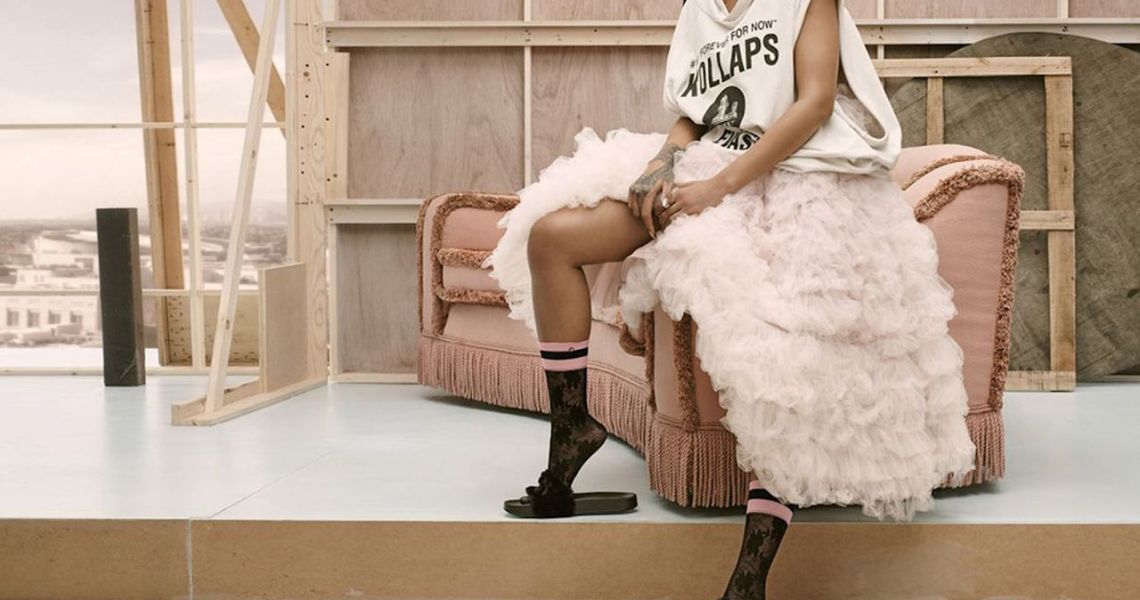Fashion has shifted focus. Rather than zeroing in on just a few huge brands making up a wide variety of products, the industry has turned its attention to the abundance of smaller brands focused on single categories.
For example, Stance has attracted A-list celebrities like Rihanna for collaborations by selling more than 50 million pairs of socks.
Candy Harris, CMO of Stance, attributes the brand’s growth to the shift in how people, especially men, have begun thinking about accessories. No longer do things like glasses or socks have to be a utilitarian, almost invisible part of a person’s wardrobe. Instead, the fashion market has expanded horizontally.
The plethora of accessories brands has given people more options for expressing themselves through fashion, thanks to a wider variety of options.
“Socks, like a lot of accessories, have become an extension of your style,” said Harris. “It’s been fun to watch men’s fashion explode and watch how guys have become more adventurous. The whole idea of self-curation is huge, and I think socks and other accessories are a way for people to do that. For a lot of people, it can be their first step into dressing more confidently.”
Last year, retail platform Edited found accessories (meaning items like scarves, belts, hats, but not shoes or handbags) were the second biggest category in all of fashion, making up 18 percent of the overall apparel market globally and beaten only by tops. Things like belts, scarves, sunglasses and hats are all growing at a rapid rate, with the only straggler being jewelry. This upswing for accessories has translated into a number of new DTC start-up brands that are laser-focused on a single accessories category like MVMT for watches, Dagne Dover for bags, Warby Parker for glasses and Stance for socks.
Next week, Stance is opening a store at Hudson Yards, which will be the brand’s 13th retail location. Currently, Stance has around 150 employees. The company launched only with socks, though it has since expanded to underwear, intimates and T-shirts.
Ad position: web_incontent_pos1
Still, socks remain the brand’s main category. The company has different categories of socks like Lifestyle, Casual and Performance, each with dozens and dozens of styles. Stance regularly collaborates with celebrities like James Harden and media companies — a new design is based on the upcoming film “Captain Marvel.”Harris says that the rise of streetwear and sneaker culture has played a major part in the brand’s success. Since people are paying more attention to their sneakers, it is unsurprising that the accompanying socks would see a boost as well.
“It’s a natural adjacent category,” said Harris. “[Streetwear] has become a bit of a home base for the brand. In my opinion, high fashion is influenced by street culture and athleticwear, and vice versa. All these things are interconnected, and the walls between them are coming down.”
A comparison of Stance’s place in streetwear to luxury overall is an apt one, given how important accessories are to luxury brands. A report from Exane BNP Paribas found that 30 percent of the global luxury market is made up of accessories, and leather goods make up the majority of revenue for luxury group Kering.
Just Human, another brand that has gone all in on a single category, specifically sunglasses, is relying on the desirability of luxury accessories to get its relatively young brand off the ground.
“[We definitely] think that accessories are a point of entry for a luxury purchaser, as they are simply more attainable than other luxury goods,” said Craig Gonsenhauser, co-founder of Just Human. “We believe that luxury should be available and accessible to everyone, so we sell direct-to-consumer, which allows us to offer a more attainable price point that attracts a more diverse group of people.”
Ad position: web_incontent_pos2
For Just Human, the appeal of focusing on a single category of accessories is that it removes some of the more difficult logistical parts of running a fashion brand, and simplifies the product development and marketing tasks, making it a bit lower risk than other categories.
“It is important to us to start by building a community and telling the story behind our sustainable materials, functional design and brand,” said Gonsenhauser. “By focusing on accessories, we see more opportunities than challenges. Without the restrictions of size and gender, we can attract a larger and more diverse audience and bring the message of more responsibly made products mainstream.”
The market is much friendlier today than it was years ago to brands that focus in on a single category, particularly in accessories. But putting all your resources into a single category also comes with its own set of challenges — challenges that any accessories-focused brand needs to be able to navigate.
“You have to bring a lot to the table if you’re only going to do one category,” said Harris. “It’s exciting to have all these young brands come in and own a single space. You don’t have to have a complete product offering anymore. You can find success by just doing one thing really well.”




